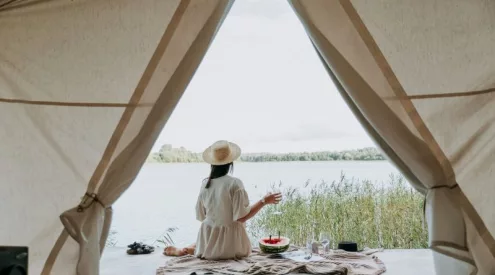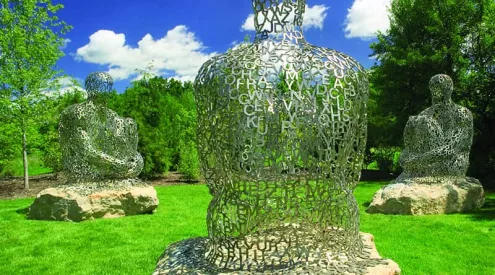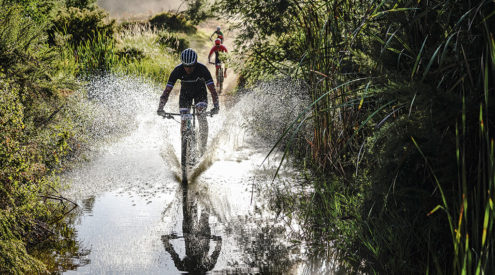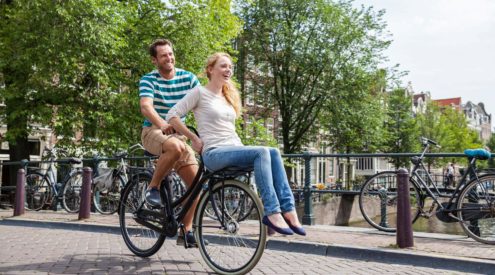Always game for an adventure, the opportunity to go on a Cycle in Soweto tour cropped up recently and having grown up in Johannesburg’s northern suburbs I wanted to know more about the history on my doorstep. Cycling in Soweto wasn’t what I expected.
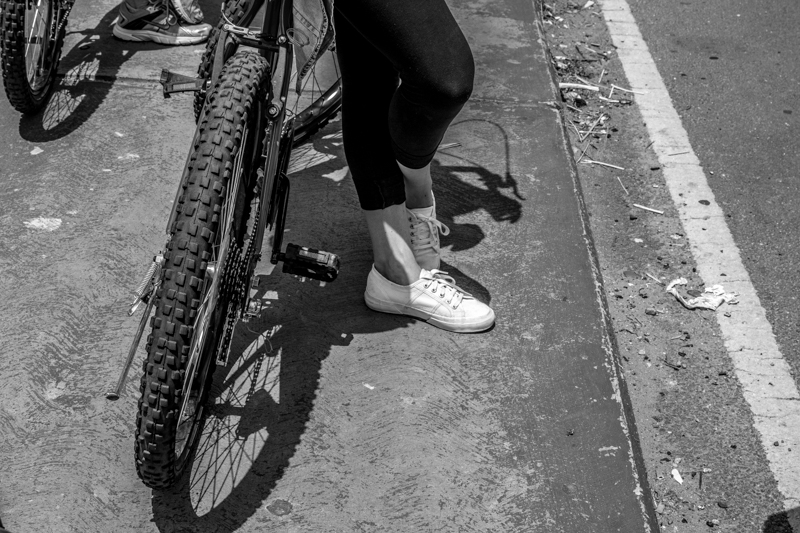
A fellow cyclist perches on her bike while listening to our guide chat about Soweto.
Our guide Lita was an exuberant leader with the tendency to go off on a tangent. He’s been taking these tours for three years and says the majority of his groups are overseas tourists (mostly from Holland) and not locals like us.
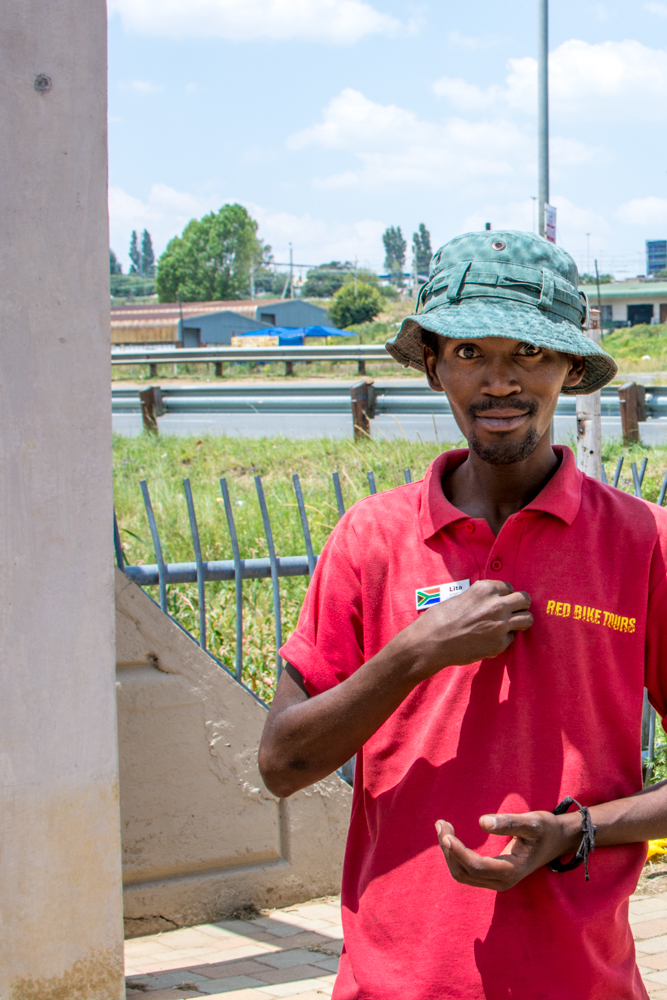
This is Lita, our guide to cycling through Soweto.
Not well-acquainted with cycling, Soweto streets seemed a hair-raising place to get accustomed. However, taxis and cars were patient and seemed used to it all. The sight of tourists on bicycles in the township is apparently not unusual.
We cycled our red bicycles through the suburbs of Soweto to a chorus of ‘umlungu’, and residents driving past in their cars shouting from their windows, “How do you like South Africa?” Other pedestrians walking beside us asked where we were from. Our answer, “Johannesburg” fell upon surprised expressions.
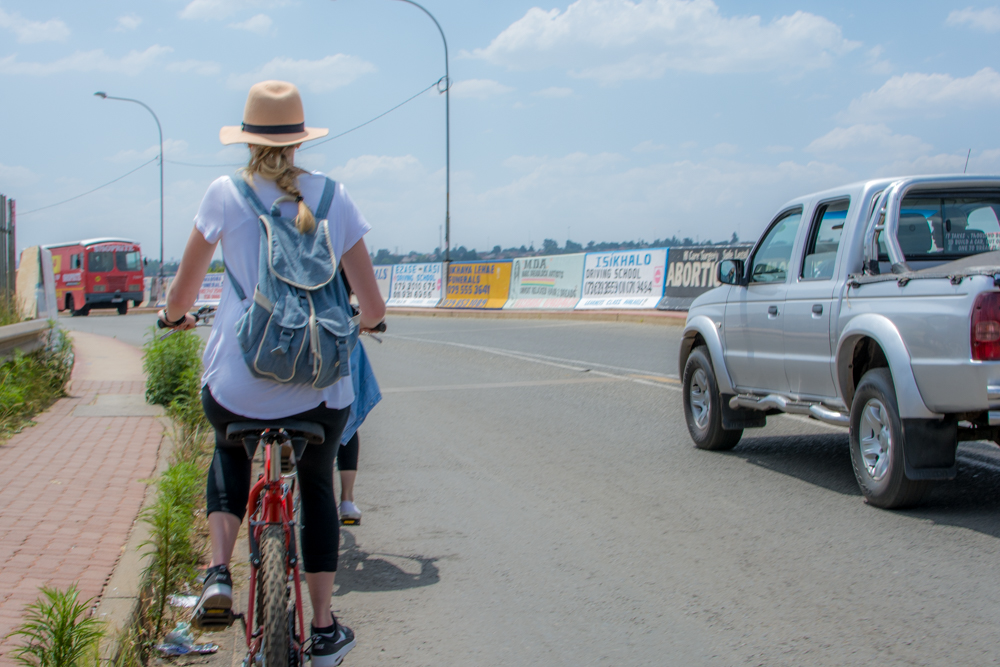
Cycling on a main road in Soweto.
The website says, “Riding with us lets you escape the bus, see more, have real personal interactions with locals, enjoy the fresh air and you exercise your body (but not too much).”
They are right. The tour offers up real life on a plate, but it can get uncomfortable.

The iconic red bicycles are a sure signal for ‘tourist’.
We entered a particularly cramped area which Lita told us was called ‘Sao Paolo’ by Soweto locals, referring to the slums of the South American counterpart. This was the Soweto you often see in pictures, the one ingrained in my own imagination after years of stereotyping, news stories and school education on the Apartheid era. There was more rubbish than street, pigs paraded the treasure troves of trash and the tightly crammed corrugated iron shanties slotted together like puzzle pieces. Our guide pulled over and pointed to the outhouses communally used by too many people. The ones that seem to make the news again and again, the residents’ cries of indignity to no avail. It made us all feel uneasy. It felt too voyeuristic. Too intimate. Too inappropriate. We suddenly realised we were paying to have someone show us poverty. We were total intruders.
It was a raw encounter, so in some way it’s probably needed, but it was difficult to shake the uneasiness and the bottomless feeling in our stomachs. I have no photographs of ‘Sao Paolo’. This was the lowest social class in Soweto and it felt unbearably disrespectful.
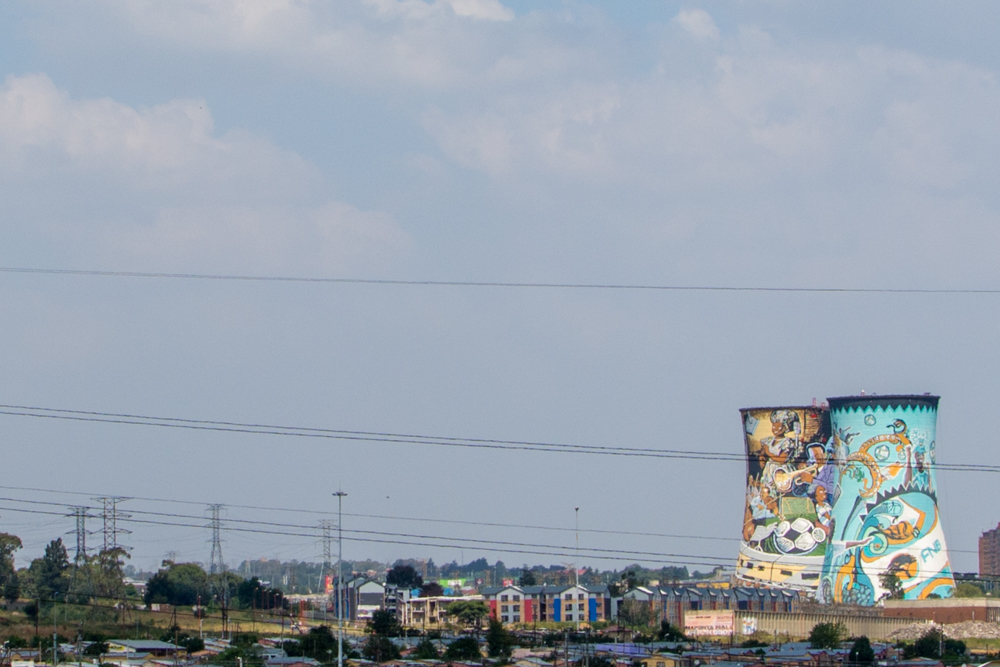
The Orlando Towers are visible from nearly every point on our tour through Soweto.
Leaving the slums behind, we passed shebeens, Maponya Mall and finally cycled on to vibey Vilakazi street. In stark contrast, fancy SUVs lined the road and there were curios galore, which Lita asked us to look through in a show of support. The sense of community was palpable through the streets. Lita wished to help support his industry and was greeted by locals throughout the tour – from the children of Sao Paolo to the vendors at Vilakazi Street.
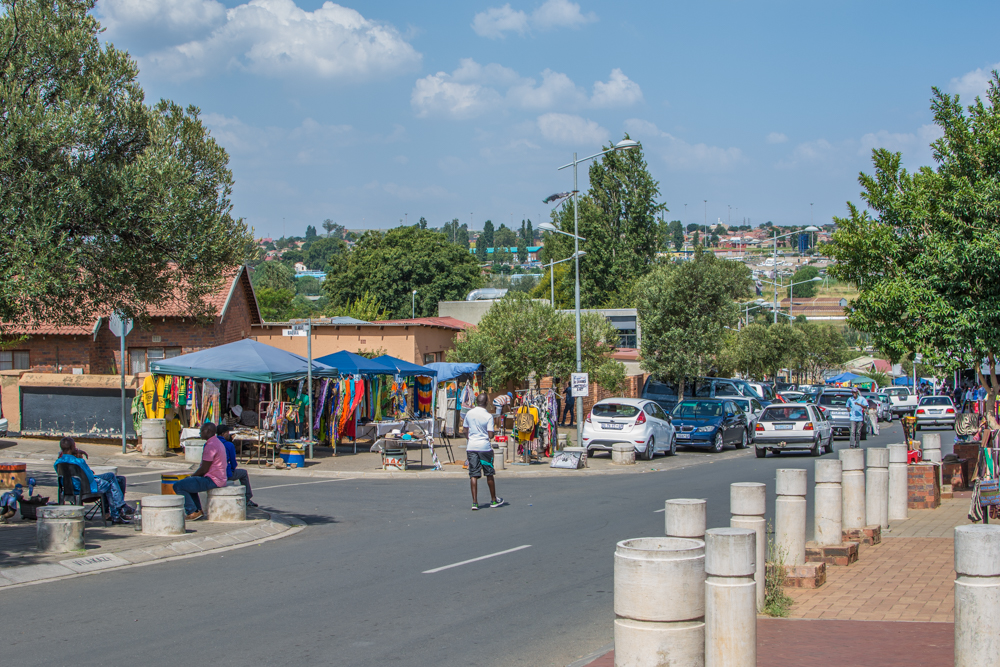
Vilakazi street was pumping, with all the restaurants full on Sunday.
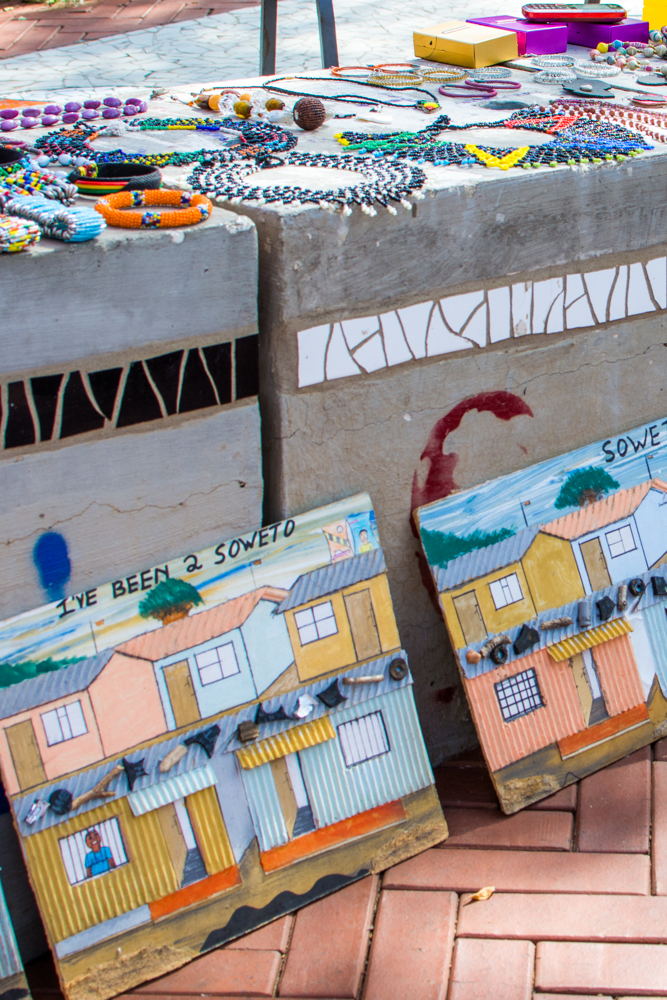
Some of the curios on offer in Vilakazi Street.

Lita pauses on Vilakazi Street to talk about Hector Pieterson at the place where he was shot in 1976.
Our tour ended with a Kota meal – polony, chips and cheese served with bread in a bunny chow fashion – and we said goodbye to Lita.

A Kota meal.
I’m still not sure whether I’d go on the tour again and am struggling with the experience. But I am still glad I went. Lita was a wonderful guide, it got me thinking about South Africa, it opened my eyes to the lives of others, made me envy a sense of community I’ll probably never know here in the high-walled north, and made me realise that you have experience a place to believe it, even if it makes you uncomfortable.
You can find more photographs of the tour on my personal blog, plus one of me in a traditional zulu hat.
Alternative township tour
For interests sake, two black photographers from Langa, a township in Cape Town, recently made this thought-provoking video on township tourism. They inverted the typical tour by walking through Camps Bay and photographing the locals. It’s an exploration of what they dub ‘poverty porn’ for tourists and captures exactly the element that made me feel so uncomfortable in ‘Sao Paolo’.
Also read: Langa through expensive lenses: touring the township
Their commentary in the video is particularly poignant and resonates stirringly after my tour. Watch the original news snippet too, it offers a pretty balanced look at the good and bad of these tours.
What do you think? I’d love to hear your thoughts on township tourism in South Africa.
You can read about another Getaway blogger’s weekend in Soweto here and did you know you can bird-watch in Soweto too?
As Getaway’s gear editor I’m always on the look out for new travel gadgets to test and review. If there’s anything you think I should check out, please let me know. I’m also blogging at melanievanzyl.com where you can follow my travels, photography and updates on all things Joburg.





